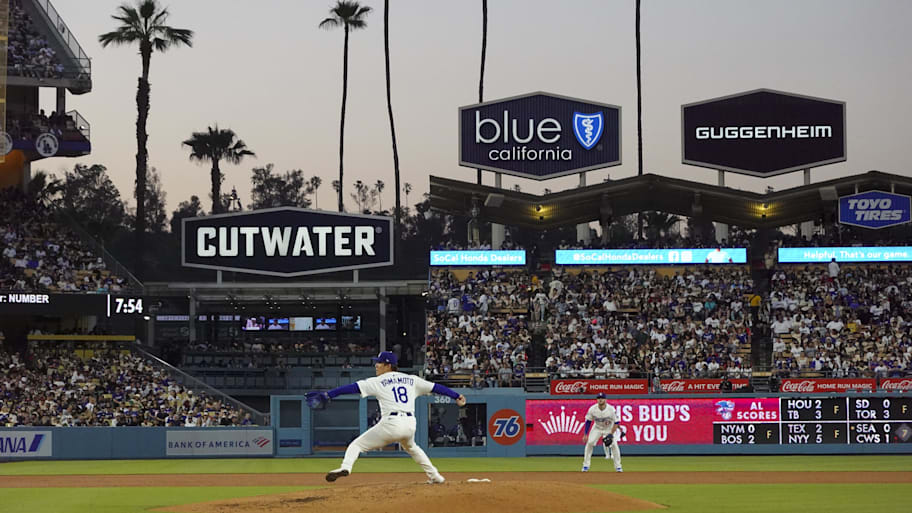In the movie "Bull Durham," Crash Davis (played by Kevin Costner) rhapsodizes about the time he finally made the major leagues, a feat also known as making "The Show"—a term popularized by the 1988 baseball classic starring Costner, Susan Sarandon and Tim Robbins.
"I was in The Show for 21 days once. Twenty-one greatest days of my life," Davis regales his much younger and curious teammates on a bus ride to their next road-trip stop. "You know you're never handed your luggage in The Show? Somebody else carries your bags. It's great.
"You hit white balls for batting practice. Ballparks are like cathedrals."
MLB stadiums are the grand stages for the planet's greatest baseball players to perform. And it's fitting that the ballpark with the largest capacity is not only located in Hollywood but also is revered as having ecclesiastical qualities for the most devout fans.
How Seating Capacity Is Measured
MLB ballpark capacities are determined by the number of individual seats throughout the stadium when it is in a baseball configuration. Capacities can vary for other events, such as concerts.
Some MLB ballparks have standing room areas, but the additional fans are not included in capacity totals.
Over the years, stadium capacities have changed due to renovations and expansions. Fenway Park in Boston opened in 1912 with a seating maximum of 35,000, and it remained under 34,000 from 1960 to 1988 before growing in 1989 to 34,182 with the addition of stadium club seats.
Now, Fenway Park has two seating capacities—37,755 for night games and 37,305 for day games when a black tarp covers the center-field bleachers to provide a batter's eye.
The Biggest MLB Stadiums by Seating Capacity
Dodger Stadium, the iconic home of the Los Angeles Dodgers since 1962, has the largest capacity of any current MLB stadium—56,000 seats among its six different levels.
The second-largest MLB seating capacity exists at Chase Field. The Arizona Diamondbacks' ballpark in downtown Phoenix has 48,633 seats.
Third on the list is the Seattle Mariners' T-Mobile Park (47,943) , followed by the Colorado Rockies' Coors Field (46,896) and Yankee Stadium (46,537), the home of the New York Yankees since 2009 when it replaced old Yankee Stadium (57,545).
A Closer Look at the Top Three Largest Stadiums
Dodger Stadium appropriately has MLB's biggest capacity when factoring in the club's current run of success and its stature around the league and within L.A.'s highly competitive market for sports and entertainment dollars.
New visitors to Chavez Ravine might be underwhelmed at first glance when strolling up to Dodger Stadium, which, from the outside, looks like it hasn't changed at all since its 1962 opening.
Once inside, the history and nostalgia is palpable. And with its recent renovations—namely the complete reconstruction of the pavilion sections beyond the outfield walls and the creation of Centerfield Plaza—the ballpark feels uniquely modern. The scenic views of the San Gabriel Mountains give Dodger Stadium one of the more picturesque backdrops in baseball, too.
Dodgers home games continue to be a hot ticket. The season attendance continues to approach 4 million, including 3,941,251 fans in 2024 when L.A. won the franchise's eighth World Series championship and second title in five seasons.
Chase Field and T-Mobile Park opened in 1998 and 1999, respectively. Both feature retractable roofs to maintain optimal playing conditions amid the hot Arizona sun and frequent Seattle rain.
Chase Field has been home to the Diamondbacks since their inaugural campaign in 1998, when the stadium was called Bank One Ballpark. Its most unique characteristic is the 25-meter swimming pool beyond right-center field that's available to groups up to 35 people. During the 2023 World Series, the pool and hot tub suite was rented for $26,000.
T-Mobile Park (known as Safeco Field when it opened in July 1999) was a breath of fresh air for baseball fans in the Pacific Northwest. For their first 22 1/2 seasons, the Mariners played in the Kingdome, one of the more gloomy settings for baseball with its drab decor and cavernous indoor atmosphere.
Safeco Field brought a new energetic vibe to the Mariners baseball experience, and it revitalized the area south of downtown Seattle as a popular destination for locals and tourists with an influx of new restaurants and bars.
This article was originally published on www.si.com as Biggest MLB Stadiums by Seating Capacity.
